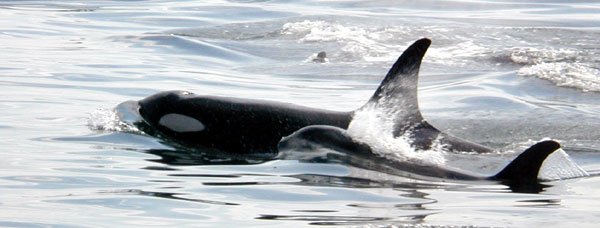
You might be surprised to learn that orcas are not just fierce predators; they’re also one of the most versatile eaters in the animal kingdom. With different populations, orcas have varying diets, reflecting their unique environments and hunting strategies. Think of orcas like the ultimate oceanic buffet diners, each with distinct preferences based on what’s available. So, grab a cup of coffee, and let’s explore the intriguing diet and feeding habits of the orca.
Understanding the Orca’s Diet
Orcas are apex predators, which means they’re at the top of the food chain. What they eat varies widely depending on their region and the specific pod they belong to. There are two primary types of orcas: *resident* and *transient*. Resident orcas primarily feast on fish, while transient orcas, often referred to as “Biggs” whales, tend to hunt marine mammals like seals and even other whales.
So, what exactly do these whales consume? Here’s a snapshot of their main food sources:
- Fish: Salmon, herring, and mackerel are favorites among resident pods.
- Marine Mammals: Transient orcas hunt seals, sea lions, and even other whales.
- Sharks: Some orcas have been known to hunt and eat sharks, displaying their impressive hunting abilities.
- Birds: Occasionally, they may also target birds or even the odd sea turtle.
This dietary variety highlights their adaptability, as they can shift their hunting methods based on what’s seasonally available.
Hunting Techniques of Orcas
Here’s the thing—hunting is far from a simple task for orcas. They employ a range of clever techniques that showcase their intelligence and social nature. One common strategy involves teamwork: orcas often hunt in groups, coordinating their movements to drive prey into tight schools. This makes it easier for them to catch fish, especially during migratory seasons.
One fascinating method is called *carousel feeding*. In this technique, orcas work together to create a swirling ball of fish by using their powerful tails to stun their prey. It’s like a synchronized swimming routine but, you know, with fish. Another technique is known as *spyhopping*, where the orcas will poke their heads above water to locate prey, which shows a surprising level of curiosity and intelligence.
To put it simply, these hunting methods are not just about brute force; they involve communication and strategy. It’s clear that orcas are both smart and social creatures, which helps them thrive in their ecosystems.
Why Social Structure Matters
Orca pods are family units, often composed of mothers, their offspring, and sometimes other relatives. This social structure plays a significant role in their feeding habits and hunting techniques. Since orcas have strong family bonds, they share knowledge about hunting and areas rich in food.
Let’s think of a pod like a tight-knit community, where older members teach younger ones essential survival skills. For instance, elder orcas might show younger ones the best places to hunt or how to execute specific hunting techniques. This passing down of knowledge not only helps with their diet but also strengthens social bonds within the pod.
In contrast, transient pods may have less structured social hierarchies, focusing more on the individual hunting skills of each member. Their approach allows them to effectively target larger marine mammals, which require a different set of hunting strategies than those used for fish.
The Role of Environment and Seasonality
The orca’s diet isn’t just shaped by their social structure—it’s also influenced by their environment and season. As ocean conditions change, so does the availability of prey. Resident orcas, for instance, may primarily hunt salmon, but when salmon runs are low, they might diversify their diet to include other fish.
In colder regions, food sources can become scarce during winter months. While some pods travel to warmer waters, others have adapted by altering their hunting methods or targeting different species available at that time. It’s fascinating to see how these marine mammals can pivot in response to environmental changes, showcasing their resilience.
Here’s a quick look at how seasonal changes can affect their diet:
- Spring: Salmon migration begins, and resident orcas feast on this abundant food source.
- Summer: Increased availability of fish means pods can take advantage of rich hunting grounds.
- Fall: Fish populations begin to dwindle, prompting shifts in prey selection.
- Winter: Predators may hunt different species or travel to warmer areas for more reliable food sources.
Impact of Human Activity on Orca Diet
Human activity has a substantial impact on orca diets and ecosystems. Overfishing has reduced the availability of critical prey like salmon, which directly affects resident orca populations. When their primary food sources dwindle, orcas face food scarcity that can lead to malnutrition and lower reproductive success.
Pollution is another issue that can’t be overlooked. Toxins and plastics in the ocean can accumulate in the food chain, impacting the health of fish and, subsequently, orcas. Let’s not forget ship traffic, which can disrupt hunting, especially for transient pods that rely on stealth to ambush their prey.
It’s important to recognize our role in protecting these magnificent animals and their habitats. Supporting sustainable fishing practices and advocating for clean oceans can help ensure orcas continue to thrive in the wild.
In summary, the diet and feeding habits of orcas are incredibly diverse, influenced by their social structures, hunting techniques, and the environment they inhabit. From their exceptional hunting strategies to the ways they adapt to changes, these marine mammals demonstrate just how complex and fascinating their lives truly are.
By understanding their dietary habits, we not only appreciate orcas more but also recognize the importance of protecting their environments. As we face challenges like climate change and pollution, every small effort counts. Advocating for orcas helps ensure that we can keep witnessing these incredible creatures leap through the waves for generations to come. So, let’s support their journey toward survival and protection in our oceans.
